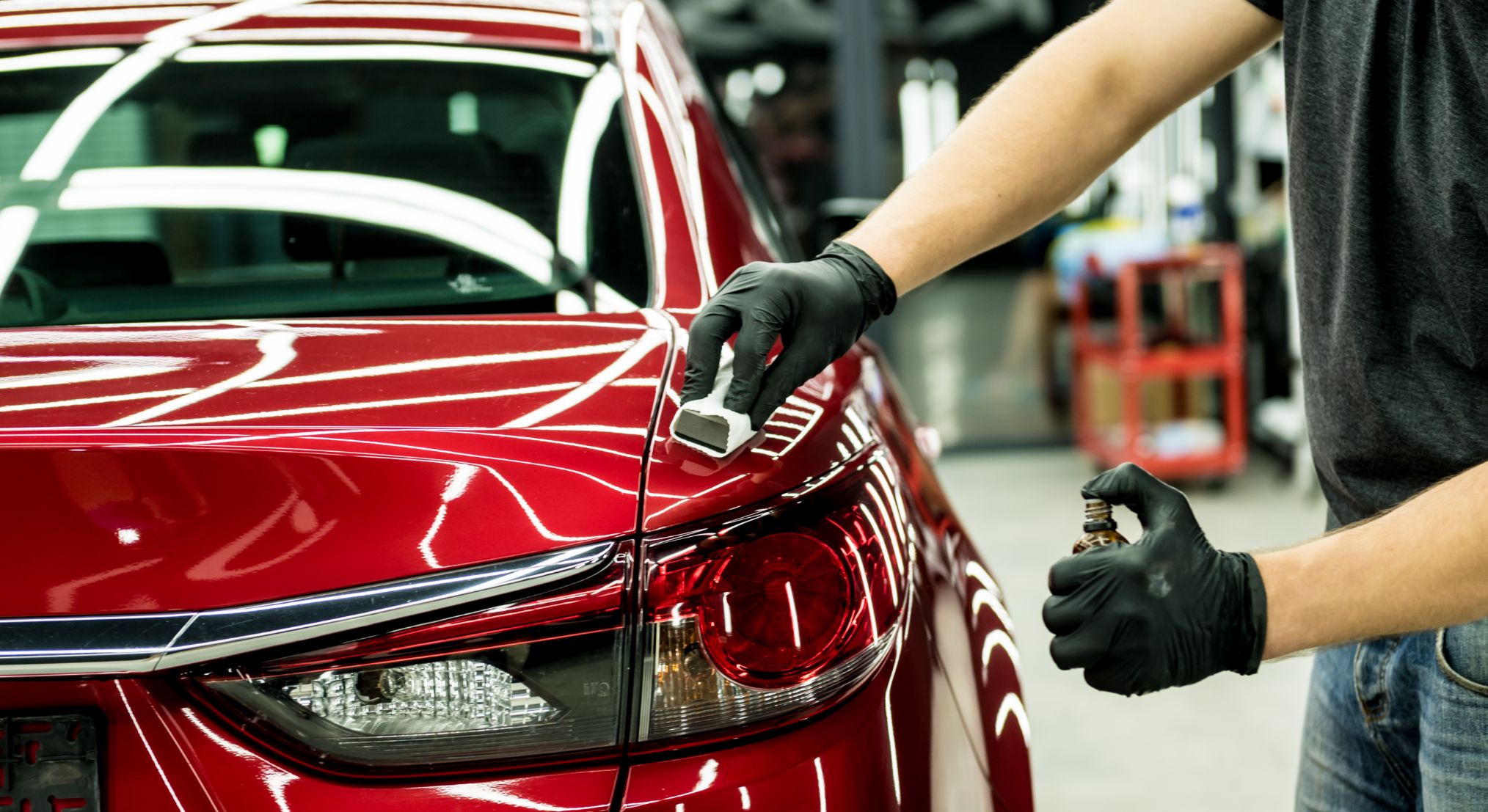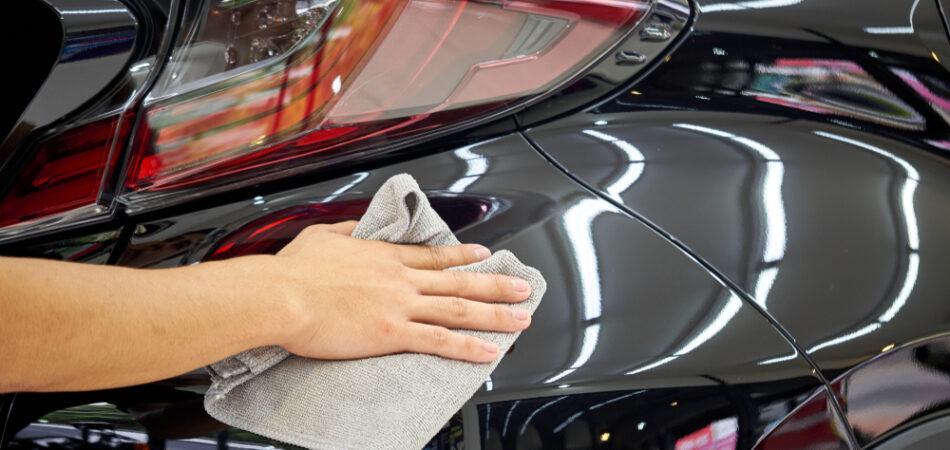Is Ceramic Coating Worth the Investment for Your Car’s Exterior?
Is Ceramic Coating Worth the Investment for Your Car’s Exterior?
Blog Article
Ceramic Finish vs. Standard Wax: Which Provides Much Better Long-Term Defense?
The discussion in between ceramic layers and traditional wax for vehicle security has garnered considerable interest amongst auto lovers and experts alike. While both serve the function of safeguarding paint, their distinctions in longevity, application, and long-term upkeep costs might affect a customer's choice. Ceramic finishings flaunt premium longevity and resistance to ecological elements, yet the intricacy of their application increases inquiries concerning availability and usefulness. As we check out these contrasting choices, it comes to be vital to take into consideration not just the instant advantages but also the implications for automobile treatment gradually.
Overview of Ceramic Layer
Ceramic covering has obtained significant popularity amongst auto enthusiasts and detailers alike because of its sophisticated protective top qualities. This innovative modern technology is made to produce a resilient, hydrophobic shield over a lorry's paint surface, substantially boosting its resistance to ecological impurities such as dust, UV rays, and chemical stains. Unlike traditional wax, which gives a temporary layer of protection, ceramic finishes bond at a molecular level with the paint, providing resilient resilience-- usually prolonging beyond two years with appropriate maintenance.
The application procedure involves thorough preparation of the automobile's surface, consisting of cleaning and polishing to guarantee ideal attachment. When applied, the finishing cures to create a durable layer that not only includes depth and gloss to the paint but likewise simplifies upkeep. With its hydrophobic properties, ceramic layer enables water and dust to slide off even more easily, reducing the regularity of laundries and minimizing the risk of swirl marks.
Moreover, ceramic layers are offered in various formulas, allowing users to pick products tailored to their certain needs and preferences. In general, ceramic covering stands for a significant improvement in paint protection modern technology, supplying superior performance contrasted to standard options.
Review of Conventional Wax
Traditionally considered a staple in automotive care, wax acts as a popular choice for those looking for an uncomplicated approach to boost and shield their car's paint - ceramic coating. Automotive wax usually comprises natural components, such as carnauba, or synthetic substances, designed to create a protective layer on the surface of the paint. This layer not only enhances the vehicle's gloss and radiate but additionally provides an obstacle against environmental pollutants
The application of wax is normally straightforward, making it easily accessible for both professionals and Do it yourself lovers. Once applied, wax needs a curing duration, after which it solidifies to form a safety shell.
Nonetheless, while wax is effective for boosting the aesthetic allure of a car, it is very important to note that the security it supplies may necessitate a lot more regular reapplication compared to alternate products, such as ceramic layers. Overall, standard wax stays a popular choice for those prioritizing ease of use and immediate aesthetic renovation.
Durability and Durability Contrast
While both ceramic layers and conventional wax offer protective advantages for auto paint, their resilience and long life differ considerably. Traditional wax, generally made from all-natural carnauba or artificial polymers, generally gives a safety layer that lasts click here for more info about three to six months. This reasonably brief life-span requires normal reapplication to maintain optimal security.
On the other hand, ceramic layers are crafted from sophisticated nanotechnology, developing a covalent bond with the paint surface area. This causes a robust, hydrophobic layer that can sustain for 2 to 5 years, relying on the item and environmental problems. The remarkable durability of ceramic finishes is associated to their chemical structure, which supplies boosted resistance to scratches, UV rays, and oxidation.

Protection Versus Environmental Factors
Securing an automobile's paint from ecological factors is vital for keeping its look and value gradually. Autos are constantly revealed to a range of elements, including UV rays, bird droppings, tree sap, acid rainfall, and roadway gunk, every one of which can endanger the stability of the paintwork.
Ceramic finishes supply a robust defense against these environmental aggressors. Unlike standard wax, which can degrade swiftly under UV direct exposure, ceramic finishings form a long lasting, hydrophobic layer that withstands the unsafe results of sunshine and environmental toxins. This innovative technology creates a chemical bond with the lorry's surface area, providing remarkable defense that lasts for years, even in severe conditions.
In contrast, ceramic coverings preserve their protective qualities longer, substantially decreasing the danger of paint damage and guaranteeing that the vehicle retains its visual charm. As a result, ceramic coverings are increasingly identified as the remarkable option for long-term defense versus environmental elements.
Application and Maintenance Differences
The techniques of application and subsequent upkeep for ceramic coatings and typical wax differ dramatically, impacting the overall customer experience and effectiveness of each product. Ceramic coatings need an even more intricate application process, usually entailing surface prep work that consists of washing, decontaminating, and brightening the vehicle. When the surface area is prepared, the ceramic covering is used in a controlled atmosphere, frequently requiring specialist expertise to guarantee appropriate treating and bonding to the paint.

While both products improve vehicle look, the longer-lasting security supplied by ceramic layers might justify their preliminary financial investment, in spite pop over to these guys of the more requiring application process. Conversely, standard wax remains a preferred choice for those seeking a simpler, albeit short-term, service.

Conclusion
To conclude, ceramic finishes demonstrate considerable advantages over standard wax in terms of longevity and ecological defense. With a life-span extending 2 to 5 years and superior resistance to UV rays, dirt, and chemical stains, ceramic layers supply a more effective option for lasting automobile upkeep. The application procedure might call for professional competence, the resulting price financial savings and decreased frequency of reapplication highlight the worth of ceramic coverings for those seeking ideal automobile protection.
The argument between ceramic finishings and traditional wax for vehicle protection has garnered substantial interest amongst vehicle enthusiasts and specialists alike. Unlike standard wax, which offers a temporary layer of More Bonuses defense, ceramic layers bond at a molecular degree with the paint, providing long-lasting toughness-- typically extending past 2 years with proper upkeep.
While both ceramic finishings and standard wax offer protective benefits for automotive paint, their sturdiness and durability vary substantially. For vehicle lovers looking for long-lasting defense, ceramic finishes offer a compelling benefit over traditional wax products.
In final thought, ceramic finishings demonstrate significant advantages over traditional wax in terms of durability and environmental protection.
Report this page